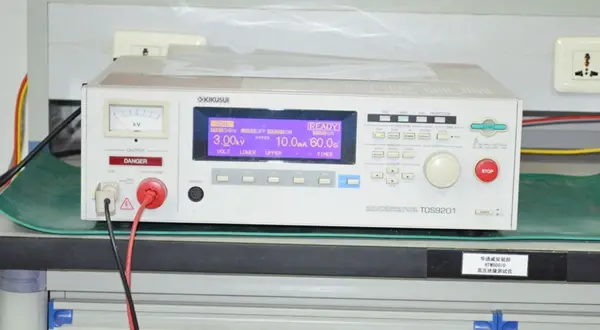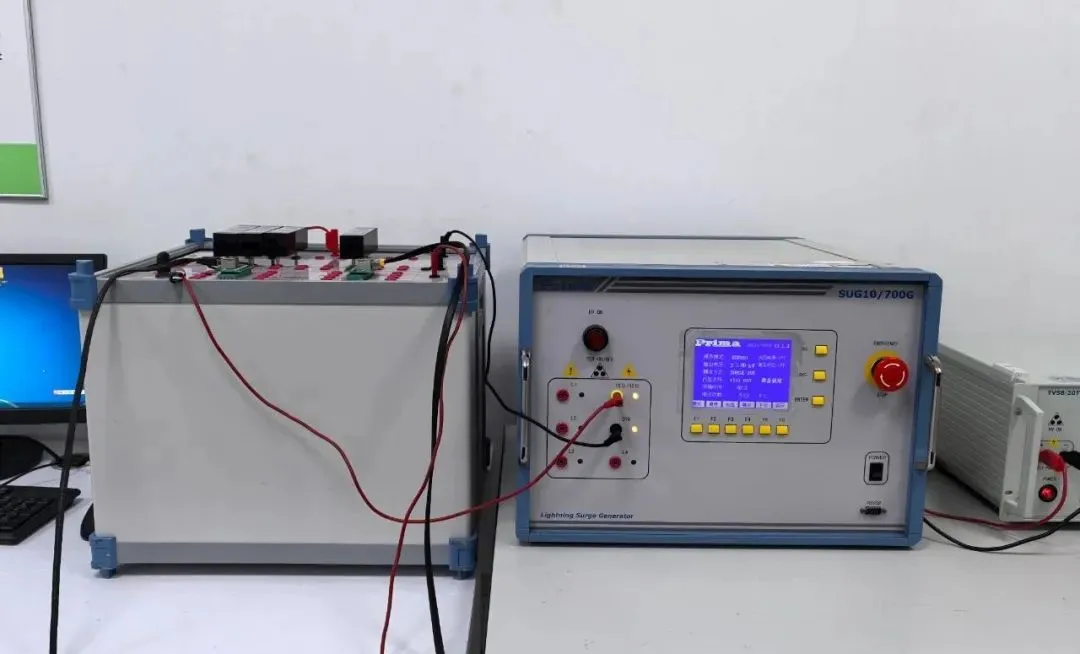
CPC Certification Requirements
For Amazon toy sellers, "passing" the CPC Certification is not only about obtaining the certificate, but also about subsequent product labeling compliance and certificate validity verification. The former directly determines whether the product can be listed, and the latter is related to whether penalties will be imposed during subsequent inspections. According to Amazon's 2025 data, 32% of toy removals are due to labeling errors, and 27% of audit failures are because the certificate cannot be verified. Combining the new regULations of the CPSC (U.S. Consumer Product Safety Commission) and platform practical cases, this article details labeling specifications and verification methods to help you completely avoid compliance risks.

I. Product Labeling Compliance
Amazon's requirements for toy labeling are much stricter than those for ordinary commodities. They must meet both the statutory standards of the CPSC and the platform's display rules. The core is divided into three categories: "tracking labels, warning labels, and information labels", with clear detailed rules for different product scenarios.
(I) Mandatory Specifications for 3 Core Labels (Indispensable)
1. Permanent Tracking Label: The "ID Card" for Product Traceability
This is a statutory requirement of the CPSC and a mandatory inspection item for Amazon's physical audit. Missing or non-compliant labels will directly trigger removal from the shelves.
Core Elements (All must be included; missing any is consideRED non-compliant):
① Responsible entity information: Full name of the manufacturer (e.g., "Guangdong XX Toy Co., Ltd.") + U.S. importer/U.S. agent information (including English name, local address, and phone number). A "dual-header" labeling can be adopted (example: "ABC Imports LLC / Guangdong XX Toy Co., Ltd.").
② Production traceability information: The place of origin must be precise to the city (example: "Made in Shenzhen, Guangdong, China"; marking only "China" is invalid), production date (format: 2025-06-27 or Week 26 of 2025), and a unique batch code (recommended rule: year + month + serial number, e.g., "No.202506A-003").
③ Physical requirements: Character height ≥ 1.5mm, using permanent processes such as laser engraving or thermal transfer (adhesive labels are easy to fall off and will be 100% rejected). It must remain clearly legible after 50 dry cloth rubs + 24-hour water immersion test.
Error Example:
A building block toy only had an adhesive label on the packaging, marked with "Made in Guangdong, China" + "2025". Due to the easy-to-fall-off label, imprecise place of origin, and vague batch number, it was fined $300,000 by the CPSC and recalled.
2. Safety Warning Label
It needs to be labeled according to product risks. Amazon will check whether the "applicable age" in the certificate matches the warning text.
Mandatory Labeling Scenarios and Specifications:
① Small part hazard (toys for children under 3 years old containing detachable small parts): Must be marked with "Choking Hazard – Small parts. Not for children under 3 years.", font height ≥ 1.6mm, and the corresponding warning text must be checked in the "cpsia" column of the product detail page.
② Electric toy hazard: Must be marked with "Battery Warning – Do not mix old and new batteries.", and the battery model and installation method must be indicated.
③ Magnet/balloon hazard: Products containing magnetic components must be marked with "Magnet Warning – Swallowed magnets can cause serious injury.", and balloon products must be marked with "Choking Hazard – Uninflated balloons can cause suffocation."
Pitfall Avoidance Reminder:
Warning text must be in English and must correspond to the "risk items" in the astm f963 test report (e.g., if the test finds a risk of small parts falling off, the choking warning must be marked).
3. Information Label
It is mainly used for consistency verification between Amazon's backend information and the physical product. It is often overlooked by sellers but can easily lead to audit failure.
Core Requirements:
① Product model/ASIN code: Must be completely consistent with the model in the CPC certificate and backend Listing (example: if the certificate is marked "Model: TC202501", the physical product and Listing must be marked synchronously).
② Applicable age: Must be consistent with the "target age group" in the certificate (e.g., if the certificate is marked "3-6 years", the physical product cannot be marked "2-6 years").
③ Compliance standards: Optionally mark "Complies with ASTM F963-23 & CPSIA" to enhance consumer trust.
(II) Labeling Detailed Rules for 4 Major Product Scenarios (Direct Reference and Application)
Product Type | Tracking Label Location | Special Warning Requirements | Common Non-Compliance Points |
Building block/puzzle set | Outer packaging (the main body is exempt) | Small part choking warning + age labeling | Inconsistent batch code with the certificate |
Plush toy | Woven label sewn inside the main body | Filling safety reminder (e.g., "Non-toxic filling") | Adhesive label falls off, and woven label information is vague |
Electric toy | Bottom of the main body (laser engraved) | Battery warning + electrical safety reminder | No U.S. agent information, and battery clause missing in the warning text |
Bulk vending machine toy | Shipping outer packaging | Minimum applicable age + centralized batch labeling | Only marked "Made in China" without specifying the city |
(III) 3 Hidden Minefields in Amazon's Labeling Audit
① Information inconsistency: The batch number marked on the main body does not match the certificate (e.g., the certificate is "202506A" and the physical product is "202506B").
② Substandard craftsmanship: Small toys use printed labels (easy to wear) instead of woven labels or engraving.
③ Unreasonable location: Labels are pasted on the easily tearable corner of the packaging or blocked by accessories, making it impossible to take clear photos.
II. Certificate Query and Verification: 2 Official Channels + 3-Step Platform Verification to Ensure Certificate Authenticity and Validity
During the audit, Amazon will verify the authenticity of the certificate through "official channels". Some sellers have their accounts banned for using "fake certificates" or "invalid certificates". It is necessary to master the dual methods of "CPSC official query" and "platform internal verification".
(I) CPSC Official Verification: The "Ultimate Judgment Standard" for Certificate Validity
All compliant CPC certificates must be based on test reports from CPSC-accredited laboratories, which can be queried through the following 2 channels:
1. Laboratory Qualification Query (Check the institution first, then the report)
Steps: Enter the CPSC official website (https://www.cpsc.gov) → Click "Accredited Laboratories" → Enter the laboratory name or qualification number (must be marked on the certificate) → Verify whether it is registered under the "children's toy testing" category.
For specific inquiries, you can contact JJR Laboratory.
Key judgment: Reports issued by unregistered laboratories are invalid. Even if the certificate format is correct, Amazon will determine it as "false material".
2. Test Report Number Query (Supported by some laboratories)
Steps: Enter the official website of the corresponding laboratory (e.g., SGS, Intertek) → Find the "Report Query" entrance → Enter the report number (must be consistent with the report number on the CPC certificate) → Verify whether the product name, test standard, and batch number match the certificate.
Note: Some small laboratories do not support online queries. You need to contact the laboratory to provide a "report verification letter" and upload it to Amazon's backend synchronously.
(II) Amazon Platform Verification: 3-Step Self-Check to Avoid Audit Failure
Sellers can conduct self-inspection according to the following steps before submission to eliminate invalid certificates in advance:
1. Verify the "7 Core Elements of the Certificate" (Indispensable)
Amazon clearly requires that the CPC certificate must include:
① Product name + model; ② Applicable age group; ③ Manufacturer/importer information (including U.S. agent); ④ Production date and address; ⑤ Test standards (e.g., ASTM F963-23, CPSIA); ⑥ Test laboratory name + qualification number; ⑦ Issuance date.
Quick self-check:
Take a photo of the certificate with your mobile phone, check each item one by one, and contact the institution to supplement any missing items immediately.
2. Verify the "Relevance Between Report and Certificate"
Core logic: The CPC certificate is a "conformity statement" based on the test report, and the two must correspond one-to-one.
Self-check points: The "test report number" on the certificate must be consistent with the report number issued by the laboratory; the "test items" marked on the certificate must fully cover the items in the report (e.g., electric toys must include "battery-driven test"; if the report is missing, the certificate is invalid).
3. Match "Listing and Certificate Information"
Mandatory verification item 1: The "product model" and "applicable age" in the Listing must be completely consistent with the certificate.
Mandatory verification item 2: If the Listing is marked "suitable for children under 3 years old", the "target age group" in the certificate must include "0-3 years", and the test report must pass the "small part swallowing test".
(III) Common Invalid Certificate Scenarios (Replace Immediately When Encountered)
① The certificate is issued by a testing institution (compliant certificates must be issued by the manufacturer/importer; laboratories only issue reports).
② No U.S. agent information is included (starting from 2025, Amazon requires all cross-border sellers to provide U.S. authorized representative information).
③ Outdated test standards (e.g., still using astm f963-17 instead of updating to ASTM F963-23).
III. Practical Toolkit: 3 Templates + 2 Query Entrances for Direct Application
1. Essential Templates (Can be downloaded and modified directly)
① "Permanent Tracking Label Template for Toys": Includes standard formats for dual headers, place of origin, and batch numbers, with two versions: "main body labeling" and "packaging labeling".
② "CPC Certificate Core Elements Self-Check Form": Excel format, check-box style to verify 7 core elements, with examples of common incorrect labels.
③ "Amazon Warning Text Specification Comparison Table": Matches corresponding warning texts by product type, including English originals and applicable scenarios.
2. Official Query Entrances (Save for future use)
① CPSC-accredited laboratory query: https://www.cpsc.gov/Accredited-Laboratories
② Amazon Product Compliance Center: Seller backend → "Inventory" → "Manage Product Information" → "Product Compliance Requests"
The core of Amazon toy cpc compliance is "detailed implementation". For labeling, it is necessary to achieve "complete information, correct location, and firm craftsmanship". For verification, it is necessary to ensure "authentic institution, real report, and matching information". In 2025, the platform's compliance audit will continue to tighten. It is recommended that sellers confirm the labeling plan before mass production of products. After obtaining the certificate, first verify its authenticity through the CPSC official website, then submit it for platform audit. If you encounter specific issues such as "selection of labeling craftsmanship" or "obtaining U.S. agent information", you can leave a message for consultation to get a one-on-one solution.
Email:hello@jjrlab.com
Write your message here and send it to us
 How to get EN 62368-1 Test Report
How to get EN 62368-1 Test Report
 EN 300 328 Bluetooth Test Report
EN 300 328 Bluetooth Test Report
 How to get the EN 300328 Test Report?
How to get the EN 300328 Test Report?
 In-depth Interpretation of SAA Certification Q&
In-depth Interpretation of SAA Certification Q&
 Differences Between EN71 and CPC for Children's To
Differences Between EN71 and CPC for Children's To
 IP56/IP67/IP68 Waterproof and Dustproof Rating Tes
IP56/IP67/IP68 Waterproof and Dustproof Rating Tes
 CPC Certification Requirements
CPC Certification Requirements
 Amazon Electric Kettle Certification UL1082 Test
Amazon Electric Kettle Certification UL1082 Test
Leave us a message
24-hour online customer service at any time to respond, so that you worry!




